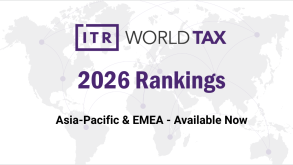Legislative Decree No. 142 of November 29 2018 transposed into the Italian tax system the provisions for countering hybrid mismatches contained in Council Directive (EU) 2016/1164 (ATAD I), as amended by Council Directive (EU) 2017/952 (ATAD II).
The Italian anti-hybrid rules apply as of fiscal year 2020, except for the rule to counteract so-called reverse hybrids, in force as of fiscal year 2022.
The objective of such provisions is to challenge behaviours aimed at obtaining undue benefits that cannot be addressed under anti-abuse rules. These behaviours exploit the mismatches between various provisions (typically to achieve double deductions in both involved states or a deduction in one state without corresponding taxation in the other).
On January 26 2022, the Italian tax authority published Circular No. 2, concerning clarifications and instruction on the application of the anti-hybrid tax rules.
Circular No. 2/2022 examines the concept of ‘hybridity’, which pertains to scenarios where the most significant tax asymmetries and aggressive tax planning schemes have been observed, resulting in substantial erosion of member states' finances. These are primarily related to financial instruments, direct and reverse hybrid entities, and permanent establishments (both regarding their recognition in a foreign state and the criteria for income attribution).
In 2023, Article 61 of Legislative Decree No. 209/2023, implementing an Italian tax reform regarding international taxation, introduced a reward mechanism for transactions potentially generating hybrid mismatches, aimed at fostering compliance between the tax authority and taxpayers (the ‘penalty protection regime’).
In summary, the provision establishes the non-application of penalties for inaccurate tax returns if the company, during a tax audit (or other investigative activities), provides the Italian tax authority with documentation that allows verification of the application of rules designed to neutralise mismatches (double deductions, deductions without inclusion, etc.).
Access to the regime is therefore conditional on the preparation and delivery of suitable documentation to the auditors and communication to the tax authority of its preparation, similarly to what is required for transfer pricing documentation.
Issuance of a new decree on Italy’s penalty protection regime
On December 6 2024, the Italian Ministry of Economy and Finance published a decree concerning the penalty protection regime.
The documentation, pursuant to Article 2 of the decree, must be submitted by any taxpayer resident or located in Italy, or by a designated taxpayer who is also resident or located in Italy.
Articles 3 and 4 regulate the structure and content of the documentation, referring to annexes A and B of the decree.
Annex A defines the necessary information to ensure the documentation is adequate for penalty protection. It must describe the multinational group and the taxpayer presenting it, formalise the internal procedure for identifying and assessing relevant transactions (those capable of generating hybrid mismatches), and detail such transactions.
Annex B outlines the procedure for identifying relevant transactions, grouped into homogeneous categories (deduction without inclusion, double deduction, imported hybrids, etc.).
The decree does not mandate the description of all transactions potentially generating mismatches; instead, it allows companies the discretion to report only those transactions for which they seek protection in the event of an audit (the omission of a transaction does not, in fact, preclude protection against penalties for transactions that are reported).
As provided for the transfer pricing documentation:
The availability of the documentation must be communicated by the taxpayer in the income tax return;
The documentation must be drafted in Italian and signed with a timestamp affixed by the deadline for filing the tax return for the fiscal year to which it pertains (i.e., by October 31 2025 for documentation related to tax year 2024);
The documentation must be delivered to the Italian tax authority upon request within 20 business days; and
If, during the course of an audit or other investigative activity, the Italian tax authority identifies the need for additional information beyond what is included in the documentation provided, such information must be submitted within 30 working days from the request.
The documentation can only be prepared for fiscal years for which the Italian tax authority has not formally initiated (prior to December 29 2023) any inquiries, investigations, or audits aimed at verifying the presence of anti-hybrid mismatches.
The decree provides that:
For the fiscal year in progress on December 29 2023, the timestamp conferring a verifiable date must be affixed by the deadline for filing the tax return for the fiscal year in progress at the date of approval of the implementing decree (therefore, by October 31 2025); and
For prior fiscal years, the documentation must be prepared within six months following the month of approval of the implementing decree (therefore, by June 30 2025).













